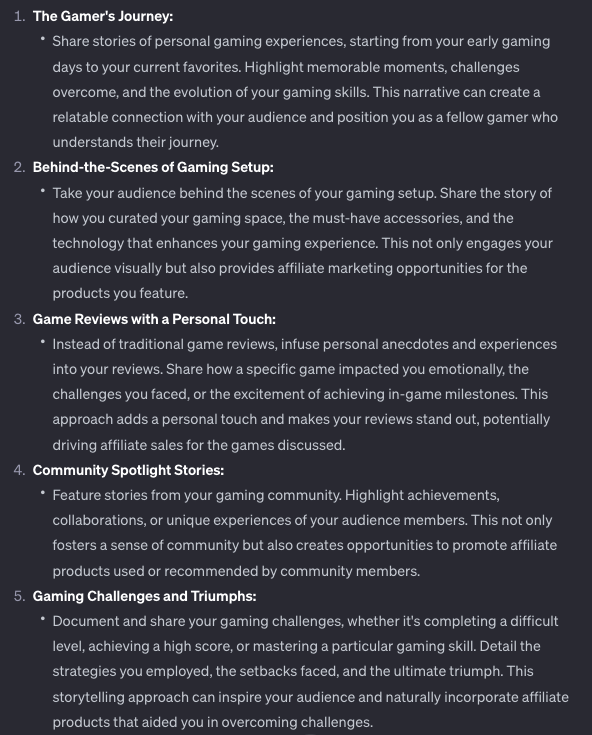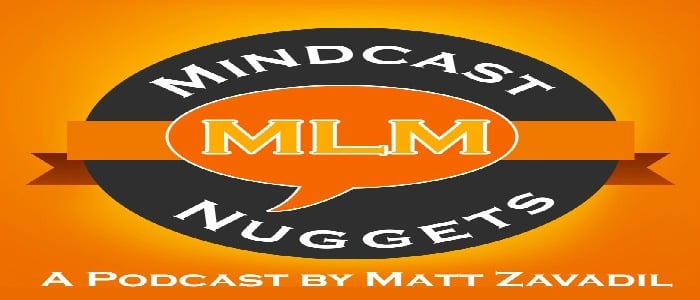 Written by Matt Zavadil
Written by Matt Zavadil
Updated January 20, 2024
Matt Memo #3 – 8 minute read
Video Version of Memo:

My client keeps saying “I’m confused. I don’t understand what you want me to do next & I’m not sure this is what I signed up for.”
Yikes!
Communication breakdown!
You want clients to say, “This is awesome. Just what I expected.”
Get that right & you’ll not only make more money, you’ll have a ton of fun getting there.
Wanna know strategic ways to build your affiliate marketing, coaching, or network marketing business this way?
Stay tuned cause that’s what this Memo is all about.
In a moment, I’ll tell you the lessons learned from that client…
…but first, let’s dig into why communication is vital.
Now, I’m not gonna feed you the same ol’ dog and pony spiel about the “importance of clear and concise communication’.
I mean, that’s obvious right?
But, there’s plenty of nonsense floating around the marketing world…
Claims as believable as a 3-dollar bill.
Like, “you have to speak in emojis to connect with millennials,”
or “avoid humor like you’d avoid wrestling with a porcupine!”
Hey, I’m over 50 and I love using emojis AND I love having fun and being a nutball sometimes.
Just like that perfect pot of coffee, effective marketing communication is a careful blend.
That blend is:
- Part science
- Part art
- And a whole lot of gut instinct
Oh, and that overused E-word—empathy?
It’s not just a buzzword to slap on your LinkedIn profile.
Real, authentic connection is the secret ingredient that turns leads into customers, and customers into advocates.
Focus on honing your communication skills until you hold up those skills like a flaming sword in this marketing dragon lair!
Alright, let’s wade into murkier waters:
The Psychology of Communication…
…specifically the gladiator fight between manipulation and influence.
Persuasion is a pretty slick character that can easily slip you into the sliminess of manipulation.
Sure, you can sweet-talk your leads into buying when you know they’re not a good fit.
But remember, what goes around, comes around.
Focus on influence instead.
It’s the classier, more respectable cousin of manipulation.
It’s about:
- Fostering trust
- Creating value
- Genuinely helping your leads and clients
Think of it this way:
Would you rather be that nagging fly buzzing around your customer’s head or the useful solution they can’t live without?
Ethical influence…it’s your ticket to sustainable and impressive sales growth.
You’ll sleep better, too.
Communication Intelligence
Next up on our wild marketing ride: ‘Communication Intelligence.’
Sounds like a fancy term dreamed up at a masquerade ball for marketers, I know…
But communication Intelligence is your ability to effectively relate with any person in any context.
I’d say it’s equal parts:
- Mind-reading parent
- Smooth-talking salesman
- Empathetic friend
Tips in this area include:
Ditch the robot-toned sales scripts.
Instead, try active listening…
…you know, actually caring about what your customer has to say ????
Blend that with a dash of empathy, a good dose of sincerity, and sprinkle in a little bit of your unique charisma.
And bingo!
You, my friend, are on your way to turning your leads into loyal customers
NLP’s Impact On Your Marketing (w/ Case Studies)
Alright, let’s drop some science into our marketing brew:
Neuro-Linguistic Programming (NLP).
Fancy name, but basically, it’s all about decoding the language of our mind.
Imagine being able to influence a customer’s thought process using carefully crafted verbal cues.
Now, am I talking about mind control here?
No, nothing that Star Trek-y, but it’s pretty interesting stuff.
And on a serious note, NLP in marketing isn’t about being a Jedi mind-trickster.
Instead, it’s about:
- Creating rapport
- Instigating action
- Fostering positive emotional responses
In simpler terms, it’s like having a cheat-sheet to your customer’s thoughts.
And if you’re skeptical?
I get it.
But, let’s consider some real-world NLP power moves.
Ever heard of a little company called Apple?
Steve Jobs, the master puppeteer of emotions, was known to use NLP tactics in his persuasive product launches.
Some people even referred to his presentations as being ‘magical’?
How about Coca Cola?
It has used the anchoring aspect of NLP to associate positive emotions, celebrations, and memorable moments with its soda.
Disney uses NLP submodalities when you visit their theme parks. The company incorporates visual details, immersive environments, and strategically placed attractions to create a memorable experience.
Nike’s use of language patterns helps motivate and inspire. The shoe company makes use of visual storytelling, along with affirmative and powerful language to evoke an emotional connection with its audience.
Mastering the Power of Storytelling in Sales Communication
Alright, lock into this next idea to increase your traffic, leads, and sales.
We’re about to move into the folktale-worthy world of storytelling inside your marketing.
Stories aren’t just for campfires and bedtime lullabies, I can tell ya that!
All of us as humans are hardwired for stories.
Thanks to a little thing called neural-coupling…
…basically an impressive brain-syncing wizardry.
Stories allow us to walk a mile in someone else’s moccasins.
It’s when our brains interpret the events and characters within stories in a way that makes us feel as though we’re actually experiencing it all ourselves.
How can you harness this power for your marketing?
Think of your sales spiel as telling a good tale.
You need a hero (your customer), a conflict (their problem), and a dazzling resolution (your product or service).
Since the beginning of time, businesses have leveraged the pull of storytelling.
Remember Nike’s ‘Just Do It’ or Apple’s ‘Think Different’ campaigns?
They weren’t selling products; they were narrating viscerally tangible experiences.
Don’t be shy here.
You’ll be amazed at the emotional bridges you can build via storytelling and the leads you can convert with this often-overlooked “magic trick.”
Remember my confused client I brought up at the beginning of this Memo?
I used that experience to brainstorm ways I could eliminate that response with every future client.
For example, I codified the precise process and sequence of events each client goes through.
I created a video they must watch and acknowledge understanding of… a video that explains step-by-step the journey they’re about to go on.
I give them a Google doc that shows in writing exactly what they saw and heard on the video.
The result?
More aligned clients who become even more excited post-purchase about the benefits to working with me.
See what I just did there?
I told you a story that will help you remember the overall lesson of this video:
The importance of clear and defined communication.
You can’t ever overdo it when it comes to communication.
Not only in your business, but with your spouse, your children, your colleagues, and your friends.
Chipotle is another brand that successfully used expert storytelling.
In 2014, it used its Scarecrow mini-video and video game to take people through a creative way to tell the age-old story of the little guy fighting the big corporation.
Going forward, keep your eyes open for the way various brands use story-telling in their marketing.
Brainstorm ways you can do it.
Think through these key aspects of the strategy:
Understand Your Audience: Know your target audience’s demographics, interests, and pain points. Tailor your stories to address their needs and preferences.
Craft a Clear Narrative Structure: Develop a clear beginning, middle, and end. Establish the context, introduce a conflict or challenge, and provide a resolution or solution.
Focus on Emotion: Appeal to emotions by incorporating relatable situations and experiences.
Use Visuals: Use images, videos, or infographics to improve engagement and reinforce key messages.
Keep It Simple: Keep your storytelling simple, concise, and easy to understand. Avoid complex language.
Show, Don’t Tell: Use descriptive language to paint vivid pictures in the minds of your audience.
Use Real Examples and Case Studies: Use real-life examples and case studies to add authenticity to your stories.
Practice Active Listening: Pay attention to customer feedback, social media conversations, and industry trends. Use insights gathered to shape your stories and address customer concerns.
Iterate Based on Feedback: Continuous iteration, or adjustment, is key to refining your storytelling skills.
Experiment with Formats: Explore different storytelling formats, such as blog posts, social media updates, videos, and podcasts. Various formats will resonate with the sub-niches of your overall audience.
Use a tool like ChatGPT to help you uncover ideas about how to go about it.
For example, I asked ChatGPT to help me come up with story ideas for a hypothetical gaming affiliate marketing business:

It came up with five interesting ideas I might use:
- The Gamer’s Journey
- Behind-the-Scenes of Gaming Setup
- Game Reviews with a Personal Touch
- Community Spotlight Stories
- Gaming Challenges and Triumphs

Lastly, let’s review a passage from the Word of God in relation to communication.
In the King James version, Proverbs 13:17 says, “A wicked messenger falleth into mischief: but a faithful ambassador is health.”
The NLT version of Proverbs 13:17 says, “An unreliable messenger stumbles into trouble, but a reliable messenger brings healing.”
It’s clear that reliable communication is just as vital today as it was in Solomon’s day.
Businesses, marriages, and other relationships can break down if a message received is different from the message sent.
Just as any of us, as believers, must share the gospel as faithful messengers as we share what God has done in our lives…
…so must we as business owners share the message of our business with our intent for prospects and clients clearly laid out.
Communicate wisely and watch your business grow as leads flow and revenue builds month after month.
My prayer today is that my ideas here help you in a meaningful way.
And if you’d like to explore other ways I can help you, take a look at the Attraction Marketing Formula if you’re a network marketer.
If you’re working on an affiliate marketing business, take a look at our 15-day challenge.
And if you’re either of those, along with being a high-ticket course creator or coach, look at my DFY content services, as they will speed up your results with either my Business Audit and/or Content Roadmap.
See you in my next Memo with more exploration into the skills that will drive more leads and sales for your business.
Helping you build it big,
Matt
P.S. Here’s how I can help you grow your business:
The Fastest Way To Use Affiliate Marketing: The Insider’s Guide
The Fastest Way To Grow a Team to 1000+: The “Secret” Leader’s Playbook
The Fastest Way To Master Social Media: The 15-Second Method
The Fastest Way To Produce Content: I’ll Do It For You

